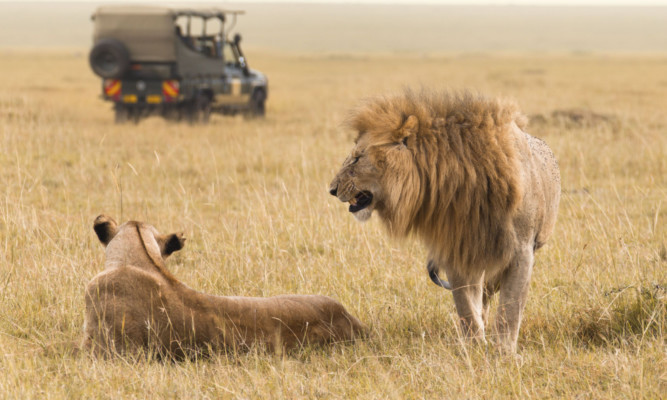
MANY of us dream about a safari holiday but there’s more than one way of doing it.
The typical notion is on the back of a high, protected vehicle, allowing you to get up close and personal with the beasts of the wild, but safe from too much attention.
You get your photos of lions, rhino and crocs, and then safely drive off for a luxury meal back at camp.
However, vehicle-based safaris are far from the sole method, and the alternative ways are fast catching up with the Land Rover-and-armed-guide safari.
Walking safaris, which may strike the fear of God into you until you learn more, are one way of doing it!
These types have actually been around for decades, offering a much closer perspective of the terrain.
Many who’ve done it swear it’s far more powerful, emotionally, and without even the sound of your own motor, all you hear is what nature intended.
Yes, including those unknown beasts rustling around in the bush close by!
You will, needless to say, still have that guard with his gun, maps and expertise. Thankfully, these guys and gals know how to use their weapons to scare off would-be predators, without shooting.
As you are clearly much closer to the ground, you can also get up close to the so-called Small Five, those creatures you may not notice on a traditional safari.
These include the elephant shrew, leopard tortoise, ant lion, rhinoceros beetle and buffalo weaver bird.
It is far simpler to see a big five, such as lions, elephants and the other sizeable stars!
It was Zambia where walking safaris first appeared, and that country is still one of the most popular for doing your stuff on two legs rather than wheels.
The South Luangwa National Park is a big favourite with those in the know.
Or perhaps going on the trail of black rhinos in South Africa appeals, in which case the White Elephant Safari Lodge, KwaZulu-Natal, should be your destination.
You can learn all about how they keep an eye on the many rare animals, with conservation and long-term safety at the heart of it all.
Other African nations, such as Kenya, have a wide ban on these walking safaris, but you can still find some options, based at private lodges and camps.
If walking sounds a bit too much like hard work on those ankles and calves, why not try a horse?
Horseback safaris are bumpy but thrilling, with Botswana among the most popular places to try this mode of safari travel.
The great plains of South Africa are another natural setting for it, but obviously a bit of previous experience in the saddle would be a major help.
Kenya may not be keen on the walking version, but doesn’t take the hump about a camel option.
It’s said to be an unforgettable way to get out in the wilds and see other creatures, who doubtless look back at you on your camel with a look every bit as puzzled.
Boat safaris are yet another alternative to that Land Rover, offering the chance to see buffalo up close, and Botswana is a big favourite for this.
Some tour operators even supply top-of-the-range cameras, free for you to use while on board, and there’s everything from small vessels for a romantic couple to large boats with plush suites and all mod cons.
Just beware of those tigerfish and their razor teeth take your photos from plenty of distance, and keep your hands out of that water!
Our favourite, though we’re not that sure how confident we’d feel as the first day approached, is a balloon safari.
Just imagine floating majestically over the vast wilderness of Tanzania or Kenya, looking down on the scattering wildebeest and giraffes.
Now, that would be a great photograph, and a moment you’ll treasure for all time.
Prices range from short breaks for a few hundred quid, to just about anything you fancy if you’ve won the Lottery, but whichever kind of safari you opt for, it’ll be good!

Enjoy the convenience of having The Sunday Post delivered as a digital ePaper straight to your smartphone, tablet or computer.
Subscribe for only £5.49 a month and enjoy all the benefits of the printed paper as a digital replica.
Subscribe